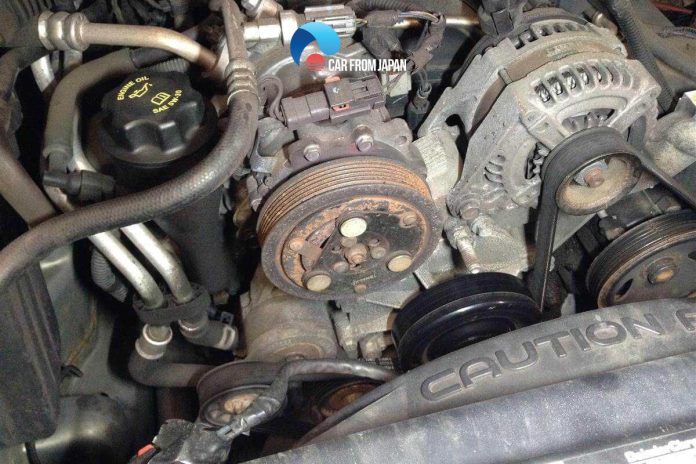Let’s find out the symptoms of bad AC compressor and how it affects the AC system.
It’s getting hot now, during the summer season but your car AC does not work properly even when you see the airflow from the AC.
Unfortunately, your AC may fail to make cool air and a high possibility is the AC compressor. Every air conditioning system of a vehicle depends on a steady flow of refrigerant to circulate through it.
This refrigerant is what allows the air conditioner to produce the cool air which comes out of the vents in the dashboard.
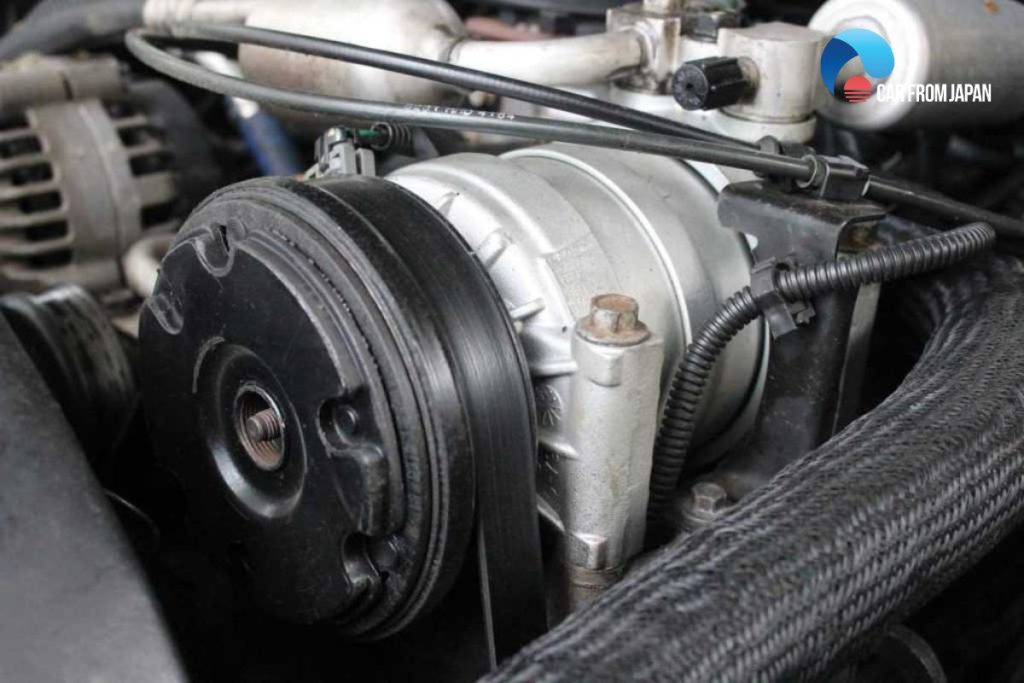
Contents
What Is An AC Compressor?
An AC compressor is an important part in the car’s air conditioning system. In the words of many repairmen, an AC compressor is the heart of an AC system.
In simple terms, an AC compressor is a pump which creates the heat by putting the air conditioning refrigerant under extremely high pressure.
The AC compressor is called a pump because both increase the pressure on a fluid and both can transport the fluid through a pipe. As gasses are compressible, the compressor also reduces the volume of a gas.
Liquids are relatively incompressible; while some can be compressed, the main action of a pump is to pressurize and transport liquids.
The AC compressor consists of 2 ports, an inlet and outlet, or ‘suction’ and ‘discharge’ respectively. The suction port is always the larger diameter hole.
Refrigerant is ‘sucked’ into the compressor, compressed, and ‘discharged’ through the outlet, headed for the condenser. Inside the compressor is a complex series of passageways, valves, bearings, and other components.
How Does an AC Compressor Work?
To know how to tell if AC compressor is bad we have to understand how the AC compressor works. To know how an AC compressor works, we must understand how the AC system operates.
Air conditioning system operating principle
Basically, the AC system works by 2 principles: evaporating liquids absorb heat, while condensation from vapor to liquid transmits heat to objects and their surroundings.
The refrigerant is pumped from the compressor under high pressure and under high evaporation temperature. During this stage the refrigerant is pumped to the condenser or the hot rig in steam.
At the condenser the temperature of the medium is very high, the fan blows the condenser, the vapor liquid is cooled, condensed into a liquid under high pressure and low temperature.
The liquid refrigerant continues to circulate to the filter or desiccator, where the refrigerant is purified by absorbing all moisture and impurities.
The expansion valve regulates the flow of liquid into the evaporator (evaporator). It lowers the pressure of the refrigerant. Due to the drop of pressure, the liquid becomes a vapor in the evaporator.
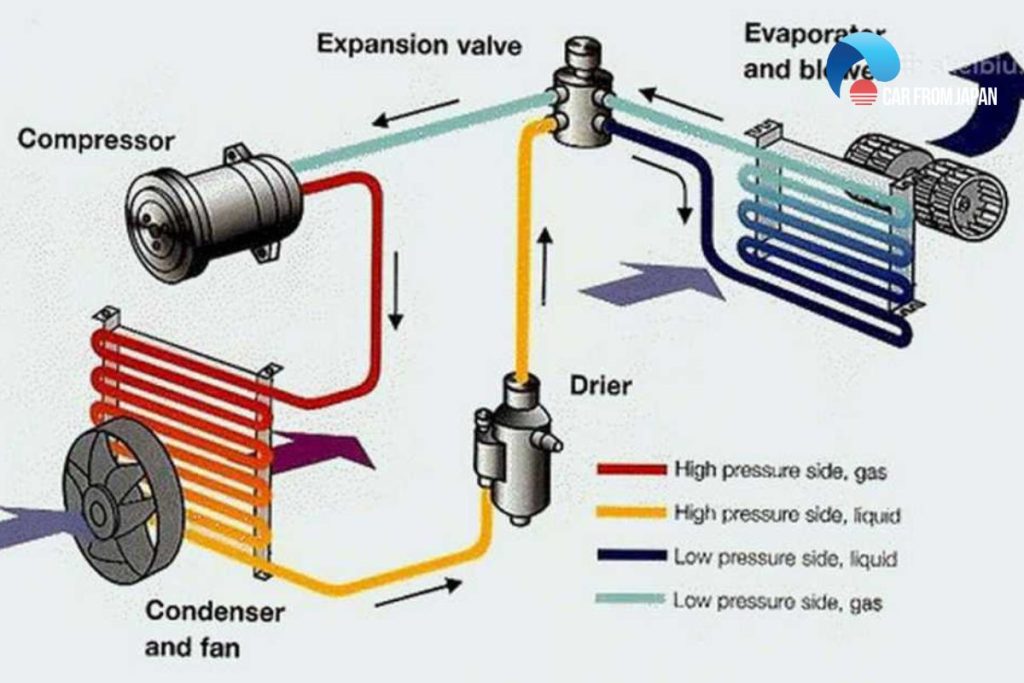
During evaporation, the refrigerant absorbs heat in the car cabin. It means cooling the air mass in the cabin.
The air taken from outside comes through the evaporator. Here, the air from the evaporator takes away a lot of energy through the radiator leaves.
Therefore the temperature of the air will be reduced very quickly. Meanwhile the moisture in the air will also condense and expose.
At refrigeration platforms, when the liquid medium is at a high temperature, the pressure becomes a vapor liquid with a low temperature and pressure.
When this process takes place the refrigerant needs a lot of energy, so it takes energy from the air around the evaporator. The energy does not go away but converts from one form to another.
The air loses energy, therefore the temperature drops, creating cold air. Refrigerant is in the vapor form, under high temperature and low pressure, returned to the compressor.
AC compressor working principle
The compressor is housed within the condenser unit and the component that starts the chain reaction cools the refrigerant. It should be noted that heat moves toward cooler areas.
When the room temperature air passes through the evaporator unit, heat is eliminated from the air. The heat from the air passes along to the refrigerant, which is then fed into the compressor.
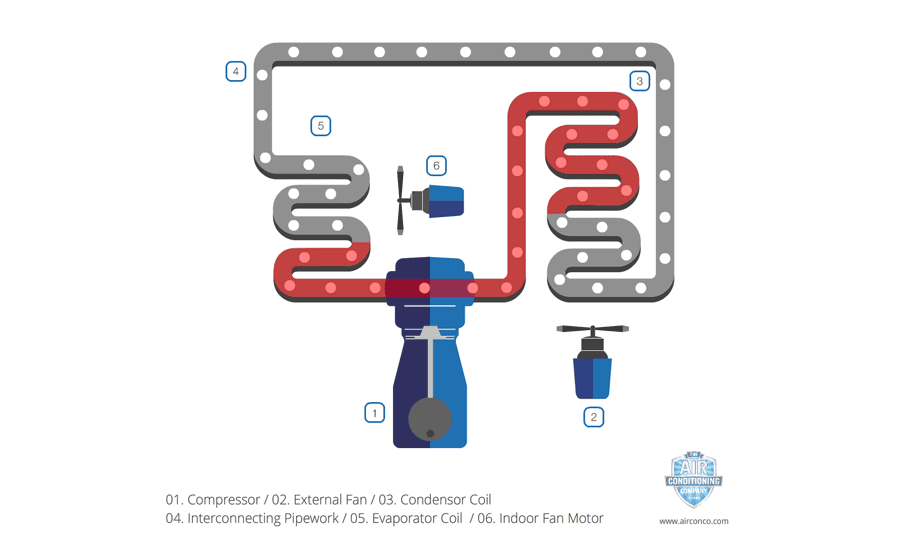
The refrigerant is then compressed, which condenses into a fluid, and is then released under pressure. At this point, the refrigerant is much hotter than when it came in, but the heat is then dissipated through the condenser coils.
By the time it reaches the end of the loop, the refrigerant is cold again and fed into the evaporator coils. This cycle continues as long as the air conditioner is turned on and the output becomes hot air instead of cold.
Symptoms Of Bad AC Compressor
How to know if AC compressor is bad is actually not as difficult as you thought since the symptoms of bad AC compressor are clear to see.
There are…. bad ac compressor symptoms which you may see when your car has a bad AC compressor. Following these symptoms will give you a basic knowledge to diagnose your car.
Higher temperatures than normal in the cabin
One of the first signs which is really to recognize symptoms of bad AC compressor is the AC no longer blowing as cold as it did.
A damaged or failing compressor will not be able to properly regulate the refrigerant flow in the AC system, and as a result, the AC will not function properly.
So you may notice that the temperature inside the car increases and the airflow from the AC is hot. There are 3 possible reasons behind this.
First is the low level of the refrigerant, second is the leak of the refrigerant and the third is the compressor is going bad and needs to be replaced.
Loud noise when compressor is running
When the heating, ventilation, and air conditioning (HVAC) system operates, it tends to have some noise when it’s kicking on and off. But the loud noise when the AC switches on is another potential symptoms of bad AC compressor.
The AC compressor has several interior components and uses a sealed bearing to turn. If any of the interior components break, or the compressor’s internal bearings fail or seize, then all sorts of noises can be produced as a result.
The most valuable solution is changing the whole AC compressor.

Moisture leaks
Most people who wonder what does a bad ac compressor sound like don’t know about the moisture leaks in the AC compressor.
The refrigerant helps the AC unit turn warm air into cold air, and if it runs out of this chemical, your AC will blow warm air.
When the refrigerant leaks out, it not only increases the potential harmful health concerns but also increases your energy consumption.
Compressor clutch is not moving
The clutch on the compressor is what allows the pulley to engage and disengage from engine power so that the compressor is only turning when it needs to be.
The clutch keeps the compressor activated, if it breaks, the compressor will not be able to receive the engine power anymore.
At the mechanic, the repairman will check the serious level of the compressor clutch, then they may decide to replace the clutch only or the whole compressor. Since it is possible to replace the clutch, it will reduce the cost for replacement.
See More: Car AC Smells Bad: The Causes And Solutions
Circuit breaker tripping
If your outside condensing unit keeps losing power and tripping the circuit, it is one of the symptoms of bad ac compressor. The reason behind is the overheating and drawing too much power, causing the circuit breaker to trip.
The tip is do not just keep resetting the circuit breaker and turning the system back on. The circuit breaker is doing the job to protect you from the potential fire hazard.
Broken suction lines
The refrigerant line in the AC system can be blocked if the compressor fails to operate, leading to the result of hot airflow in the car. You can fix this problem by taking your car to the mechanic.
The repairman knows how to remedy this issue by unblocking the refrigerant lines, but if he’s not successful, the lines will need to be replaced.
Damaged wire
When you do the maintenance at home, you may notice the damaged wiring of any sort. It is a bad ac compressor symptom. Damaged wiring presents a huge safety concern because it can easily lead to an electrical fire.
When an AC unit is exposed to electrical problems, it can lead to the compressor receiving too much or too little voltage. This quickly damages the compressor and results in the replacement of a new AC compressor.
What Is The AC Compressor Replacement Cost
So after the diagnosing of the AC compressor, we are now reviewing the cost for replacing the AC compressor. The AC compressor is a very significant component of any vehicle.
It will not be cheap to replace the compressor after it goes bad. Usually, it takes $800 to $1.200 for the whole replacement of the compressor.
It includes the component itself which will cost anywhere from $650 to $1.000 or more. The labor costs will be anywhere from $150 to $200.
The Lesson: Don’t Ignore Symptoms Of AC Compressor Failure
When the AC compressor fails to operate, it not only damages your health but also damages your wallet. First of all, the refrigerant leaking which will damage your health causes the bad AC compressor.
Moreover, AC is not able to generate cold air which is really uncomfortable especially during the summer time.
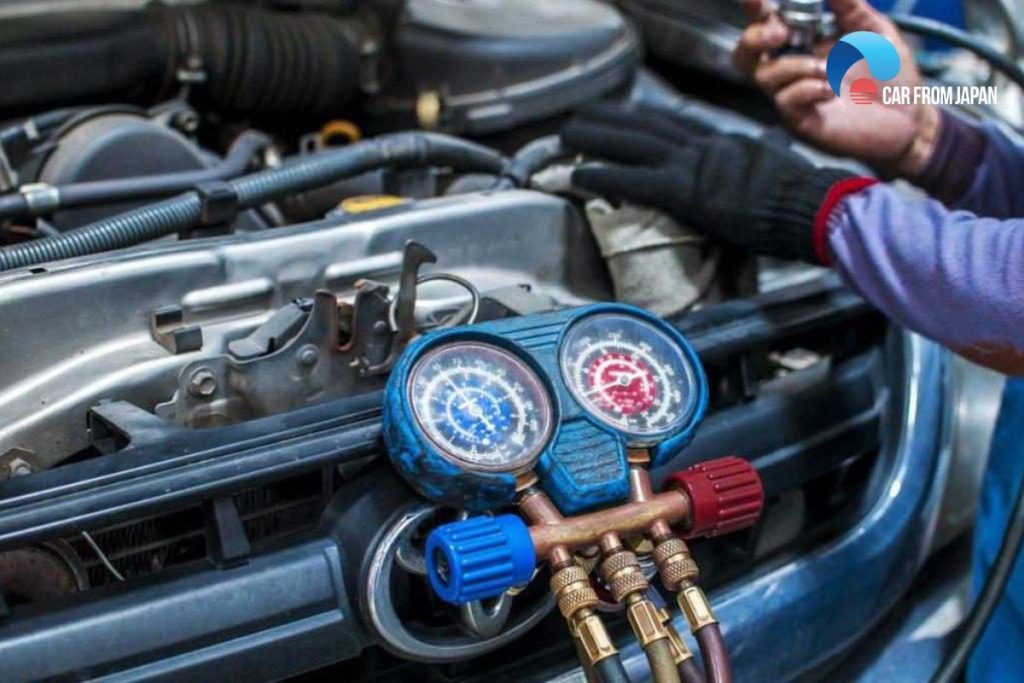
Secondly, ignoring the symptoms of bad AC compressor will increase the repair fee for you. When the AC compressor is not working well, it leads to the failure of the whole AC system.
Or if the wires are damaged, it leads to the whole broken car if you do not fix it immediately. You may have to pay not only for the bad AC compressor but the other parts.
How To Prevent The Bad AC Compressor Symptoms?
Air filter replacement
The air filter is the first line of defense for your AC system. A dirty filter restricts airflow, forcing the compressor to work harder to circulate air. This added strain can lead to overheating and premature wear and tear on the compressor.
Replacing the air filter regularly, typically every 1-3 months, is a simple yet effective way to protect your compressor and maintain optimal system performance.
If you have pets or live in a dusty environment, you may need to change the filter even more frequently.
Coil cleaning
The evaporator coil (located inside) and the condenser coil (located outside) play vital roles in heat transfer. Dust, dirt, and debris can accumulate on these coils, reducing their efficiency and forcing the compressor to work harder.
Cleaning the coils annually is essential for maintaining optimal system performance and protecting the compressor.
While you can carefully rinse the outdoor condenser coil with a garden hose, professional cleaning is recommended for both coils to ensure thorough removal of debris and prevent damage.
Refrigerant checks
Refrigerant is the lifeblood of your AC system. Low refrigerant levels due to leaks put significant strain on the compressor, causing it to overheat and potentially fail. A qualified HVAC technician should check refrigerant levels during the annual maintenance visit.
They can identify and repair any leaks, ensuring the system has the proper amount of refrigerant to operate efficiently and protect the compressor. Never attempt to add refrigerant yourself, as it requires specialized equipment and knowledge.
Electrical connections
Secure and corrosion-free electrical connections are essential for the proper functioning of your AC system, including the compressor.
Loose or corroded connections can cause electrical issues that damage the compressor and other components.
A professional HVAC technician should inspect and tighten all electrical connections during the annual maintenance visit. They have the expertise to identify and address any electrical problems safely and effectively.
Proper thermostat usage
Avoid frequently adjusting the thermostat setting, as this creates fluctuating temperature demands and puts extra stress on the compressor. Find a comfortable temperature setting and stick to it as much as possible.
Consider using a programmable thermostat to automate temperature adjustments based on your schedule, reducing the workload on the compressor and improving energy efficiency.
Clear debris around the outdoor unit
The outdoor condenser unit requires proper airflow to function effectively. Obstructions such as leaves, grass, and debris can restrict airflow, causing the compressor to overheat.
Maintain at least two feet of clearance around the unit to ensure adequate ventilation. Regularly clear away any debris to prevent airflow restrictions and protect the compressor.
Don’t overwork the system
During periods of extreme heat, take steps to minimize the load on your AC system. Close blinds and curtains during the hottest part of the day to reduce heat gain inside your home.
This helps prevent the compressor from working overtime and reduces the risk of overheating and damage.
Check out this video from EasyAutoFix to learn more about AC compressor turning bad!
Final Words
Hopefully, you now can diagnose the symptoms of bad AC compressor and understand the replacement cost. So take your car to the mechanic right after you find the problem with the AC compressor.
Or even if you are not sure about where it is wrong, take it to a mechanic too. Fixing the problem at the right time will help you prevent other damage to you and your car.

